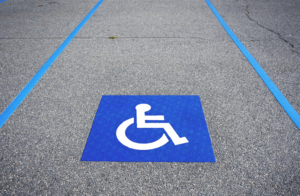You’ve just had a fresh layer of asphalt installed. It looks fantastic—sleek, clean, and ready to take on the world. Naturally, you want to protect it and make that deep black surface last as long as possible. Sealcoating is the way to go, but the timing has to be just right. Rushing the process can do more harm than good, so let’s talk about how long you should wait before sealing your brand-new asphalt.
The Curing Process Can’t Be Skipped
Fresh asphalt may look dry on top, but underneath, it’s still curing. That curing process allows the surface to harden, bind properly, and release the excess oils from the mix. These oils need time to evaporate so the surface can settle into its full strength. Sealcoating before those oils are gone creates a barrier that traps them, causing the sealant to peel, blister, or fail entirely. In some cases, it can even soften the asphalt all over again, setting the clock backward on your investment.
So, how long should you really wait? The industry standard is at least 90 days, but the exact window depends on the time of year and local climate conditions. In hot, dry areas, you might be ready at the three-month mark. In cooler, damp climates, you may need to hold off for up to six months to ensure the surface has cured completely.
Let the Weather Work in Your Favor
Weather matters a great deal when it comes to both curing and sealcoating. Asphalt cures more efficiently in warmer, dry conditions, which is why summer is often considered a prime paving season. But even during warm months, your new surface needs time to breathe. If it was installed in early spring or late fall, cooler temps and increased humidity will slow the process.
And it’s not just the curing that weather affects—sealcoating itself requires certain conditions to go on smoothly. You’ll need at least 48 hours of dry weather with temperatures above 50 degrees. Applying sealant when the ground is too cold or when rain is in the forecast leads to poor results and wasted material. That’s why at Walt’s Paving, we always check the forecast and make sure conditions are ideal before sealcoating any surface.
Why Waiting Is Worth It
It’s easy to get excited and want to protect your investment right away, but patience pays off. Waiting the appropriate amount of time ensures that your sealcoat bonds properly and performs the way it should. When done at the right time, sealcoating prevents moisture penetration, shields against UV damage, and slows down oxidation. It also gives your surface that clean, polished look that instantly boosts curb appeal.
Sealcoating too early won’t just fail—it could shorten the lifespan of your asphalt altogether. A failed coating means more repairs, more money, and more hassle down the road. That’s why it’s better to wait and get it done right the first time.
Trust the Pros to Get the Timing Right
At Walt’s Paving, we’re not just about laying asphalt—we’re about doing it right, from start to finish. We’ll guide you through the entire process, from installation to the perfect sealcoating schedule, ensuring your pavement stays strong, protected, and beautiful for years to come.
When your new asphalt is ready, don’t leave it to guesswork. Count on Walt’s Paving to know the right moment to seal the deal.
How can Walt’s Paving help?
You can count on Walt’s Paving to complete your residential or commercial paving project in an efficient and timely manner. We have over 40 years of experience paving asphalt driveways, making asphalt repairs, and sealcoating asphalt. We are located in Osceola, IN, and service homeowners and businesses within 50 miles of Elkhart, IN. Call us today.







